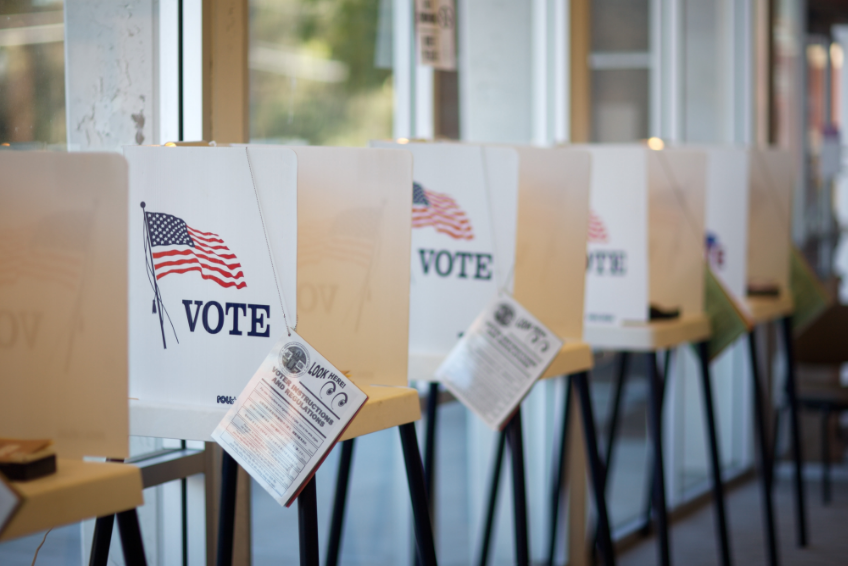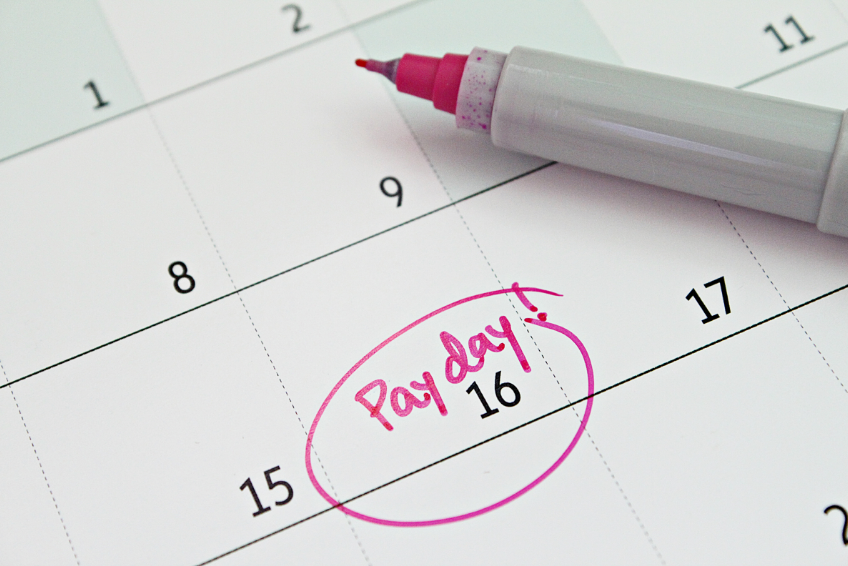Now that we’ve passed Labor Day, it feels like fall is officially arriving (even if it’s still in the 80’s here in Georgia), and that means that Election Day will be here soon. Some states require that companies provide time off to vote, but the rules vary on the specifics and whether it must be paid. Regardless of your state’s requirements, how should you as an employer think about providing time off to vote?
For a while, it’s seemed to me that companies didn’t tend to voluntarily get into the realm of time off to vote. Polls were usually open in the early morning and late evening hours, plus there was early voting, so the assumption was that employees had the ability to vote outside of their shifts and companies didn’t need to do anything else. However, we’re learning that operating hours don’t automatically lead to voting accessibility. During the Georgia primary elections on June 9, 2020, some voters waited in line for more than 4 hours to vote! While some of this was likely due to COVID-19-related issues, Georgia tends to have longer wait times than many other states. According to the Bipartisan Policy Center, one survey shows over 500,000 Americans didn’t vote in the 2016 election due to issues at polling locations, including long wait times. They say the benchmark is that no voter should have to wait more than 30 minutes to vote.
As you and I know from our own voting experiences, it can take longer than 30 minutes to vote. This can be especially true for Black and minority voters. According to the Brennan Center, approximately 3 million people waited for 30 minutes or more to vote in 2018, and Black and Latino voters were disproportionally affected. Providing paid time off is one way employers can create experiences of equality and inclusion in the workplace.
On top of this, our voter turnout in the U.S. isn’t great. In the 2016 presidential election, almost 56% of those within the voting-age population actually voted, which is just slightly more than in 2012. This puts us behind a lot of other developed countries.
Why should voter turnout matter to you as an employer? Because democracy matters. Regardless of your particular feelings about this election or others, the fact remains that who we elect into office matters. Therefore, it matters that everyone who can vote be able to vote. As an employer, you know that the decisions of elected officials affect the workplace as well as personal lives. Voting is important! Chip Bergh, the CEO of Levi Strauss, said it well when he asked all CEOs to provide their employees with time off to vote: “Democracy only works when people vote….Voting rights are sacred. They’re how we participate in our own democracy and seize control of our collective destiny. They’re an intrinsic part of what it means to be American.”
A number of companies are providing paid time off for their employees to vote, including Levi Strauss (5 hours on Election Day and 5 hours monthly for voter-related volunteering), Patagonia (closing for the day), Walmart (3 paid hours if scheduled shift doesn’t allow voting while polls are open), J. Crew (closing for the day), and Best Buy (reducing hours and making arrangements for employees in 24/7 jobs). Over 600 companies have joined Time To Vote, declaring that they are committed to providing employees with schedules that allow them to vote.
Voting difficulties already existed, but with COVID-19 in the mix this time, it’s even worse, so it’s that much more important to take action to make sure everyone has the ability to vote. Many people may not be able to vote in-person or may not feel comfortable doing so. The possibility of having to wait in long lines with a lot of people in close proximity could be a real health concern for many. Some may choose to go the route of voting by mail.
Given the option for mail-in voting, how should that factor in to your decision about providing paid time off? Not too much. The option to vote by mail or do an absentee ballot has already existed; it’s just that a lot more people may use it this time. Sure, if you give everyone time off, you could have employees who already voted and still get extra time off, but that’s a small price to pay for helping everyone have the ability to vote. Don’t worry too much about it. Focus more on which method is the simplest to administer and most effective to use.
(Side note: Make sure your leaders know that the purpose is to encourage voting – not to encourage their staff to vote for their preferred candidate. You don’t want employees to feel pressured to vote the same way as other colleagues or managers.)
No employee should have to choose between a paycheck and voting. How can you provide time off to vote in a way that’s simple, effective, and won’t break your budget?
- Provide a floating day off for voting and voting-relating activities to use anytime once early voting begins through Election Day! In my opinion, this is most likely to be the best method for any business and any employee, exempt or nonexempt and in any kind of job. Having worked at a healthcare company, I’m very familiar with businesses that can’t just close. This method is incredibly easy to administer and won’t cause staffing headaches since you won’t be piecing together a bunch of partial schedules and employees can spread out their time off. It helps your employees to have the flexibility to vote prior to Election Day rather than running the risk of long lines on Election Day itself (which could help reduce lines on Election Day as well). Since wait times at the polls tend to be longer in the mornings and evenings, having the whole day off gives your employees flexibility to choose other times of day, which can especially help those with child care or elder care arrangements. It’s also less likely you’ll end up providing time off to employees who don’t need it.
If you aren’t sure about this method, here are some other options you could consider:
- Make Election Day a paid company holiday. If your business has the ability to close, then this could be a really easy-to-administer benefit. It doesn’t help with early voting opportunities, but it does provide the ability to vote. Because it’s provided to everyone, it doesn’t take into account those who already voted, although it does provide an opportunity for them to participate in other voting-related activities. A related method is staying open but making Election Day a no-meeting day, but the difficulty is that this really only provides flexibility for your corporate, exempt staff.
- Have reduced hours on Election Day. If you don’t have the option to close, consider opening late or closing early while paying employees for the whole day. This is a good option if it works for all of your employees. Keep in mind that wait times at the polls tend to be longer in the mornings and evenings, so employees could still run into issues, and those who need child care or elder care might have difficulty voting at these times.
- Provide a few hours of time off. If you think a lot of your employees will vote by mail, this method could be helpful. I’d recommend providing the time off over a time frame (such as early voting through Election Day); otherwise, it will make Election Day very chaotic for your employees and leaders. This method can make scheduling difficult, so it’s better if you’re managing a relatively small group of employees. In deciding how much time to provide, consider whether certain amounts are easier from a staffing perspective. Also, take into account what truly provides enough time to vote. If you’re in a small town where everything is pretty close together, 2 hours might work. If you’re in a bigger city with more traffic and employees who are spread out, 3-4 hours might be needed.
These are simple ways to provide your employees with time off to vote, and they won’t cause a lot of extra work to administer. The key is to keep it simple and effective. Providing paid time off to vote demonstrates that you value democracy and believe that no employee should have to choose between a paycheck and voting. What a great way to boost morale (and get to wear a sticker)!
Photo credit: By hermosawave / Canva





